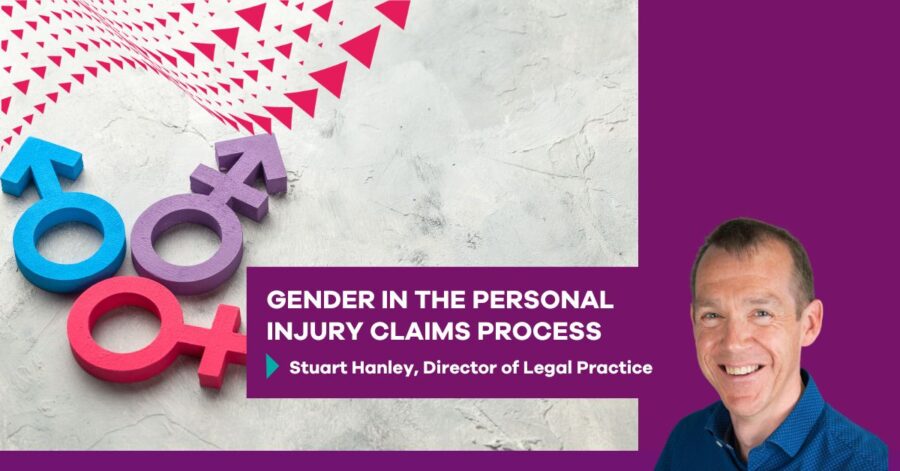Gender in the Personal Injury claims process


Earlier this year, the Supreme Court ruled that sex under the Equality Act means ‘biological’ sex. Following this ruling, the EHRC is updating its Code of Practice. A public consultation closed on 30 June, and guidance is expected soon, possibly this week.
While both the Court and Government have emphasised that trans people remain protected under the Equality Act, there has been little discussion about how this ruling affects claimants in the civil claims process, in particular those making personal injury claims.
The claim forms used to start many personal injury claims have always included mandatory titles such as Mr, Mrs or Ms – titles that many find irrelevant or uncomfortable, particularly non-binary and trans individuals.
At Minster Law, we have for some time offered the gender neutral Mx title and increasingly aim to simply address our customers by their first and last names in correspondence. Following our raising the issue with the MIB, the OIC Claims Portal will, from September, offer a ‘N/A’ option in their mandatory title field.
The Civil Procedure Rule Committee is also simplifying the civil court rules by replacing gender‑specific pronouns with neutral ones, removing mandatory honorifics and allowing non‑gendered party names. These changes improve clarity and inclusivity without altering substantive rights.
Many may recall that the Judicial College Guidelines (JCG) compensation brackets used to differentiate between male and female scarring, with higher awards for the latter. This finally changed in 2017, meaning that the subjective views of the injured person in respect of the scarring remain the focus for assessing compensation, irrespective of their gender.
But there are still gender-based differences, principally the Ogden Tables, which are used in higher value claims to help calculate future financial losses arising from an injury to the claimant.
In essence, these actuarial tables apply a multiplier to a claimant’s future annual loss items (such as loss of earnings and care costs) to ensure a balance is struck between over- or under-compensating a claimant who can elect to invest and receive a return on the lump sum settlement they receive.
Because mortality rates differ by sex, the Ogden tables provide separate male and female tables, with higher multipliers for females who, on average, have a higher life expectancy. This can trigger higher awards for claimants using the female tables, potentially six-figure plus differences.
All seemingly straightforward and very binary.
But what is the position for transgender claimant whose gender identity differs from the sex they were assigned at birth?
Many would argue the Supreme Court ruling means that you adopt the gender assigned at birth, but that risks missing some of the subtleties here, including why there is a life expectancy difference and, in turn, different male and female Ogden tables/multipliers.
In general, it is considered that women live longer than men due to a combination of biological and social factors. Biological factors include the protective effects of oestrogen, the potential benefits of two X chromosomes, and differences in cardiovascular health. Social factors, such as men’s higher rates of risky behaviours (e.g., smoking, drinking, accidents, and violence) and lower rates of healthcare seeking, also contribute to the disparity.
So, if my client is female (having been assigned male gender at birth), does this mean that they should now use the female Ogden tables, e.g., as they may now be taking oestrogen and may also move outside many of the male-based social factors identified above?
To add to the complexity, some studies have concluded that trans individuals have a higher mortality rate than cisgender individuals.
Some would argue that for issues of life expectancy and mortality, the claimant’s birth gender should determine the Ogden table used, contending that the majority of mortality risks relate to physiological differences between the sexes, whereas in other instances it should be the opposite, based on the contention that here the differences are thought to be more societal.
There is no current guidance on which Ogden table to use for trans claimants. While many cases will depend on very individual circumstances, there is a need for clarity here, and expert evidence may be needed in individual cases.
In the future, we may see variations in the Ogden tables to better reflect gender differences and move beyond the current simple male/female options.
In the meantime, as a claimant solicitor, you have an existing regulatory duty to consider your client’s attributes, needs and circumstances. Most law firms don’t routinely record gender at birth information, and you may only become aware of the situation when, for example, you receive a client’s medical records.
Firms should consider providing proactive training and guidance to colleagues to ensure they handle these matters with sensitivity, and also appreciate that whatever an individual lawyer’s view may be, they are not allowed to let their personal views affect their professional relationships and the way they provide legal services.
By continuing inclusive practices and monitoring developments, we can hopefully ensure every claimant receives the right level of compensation and that their experience remains respectful, supportive, and professionally robust.